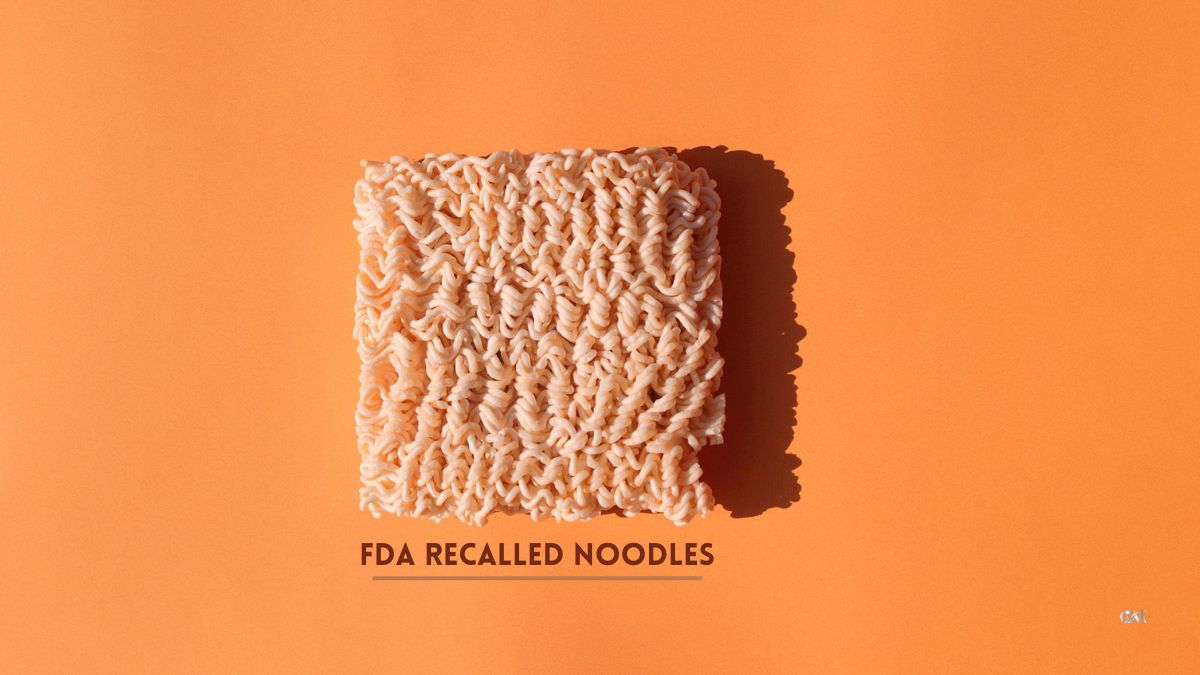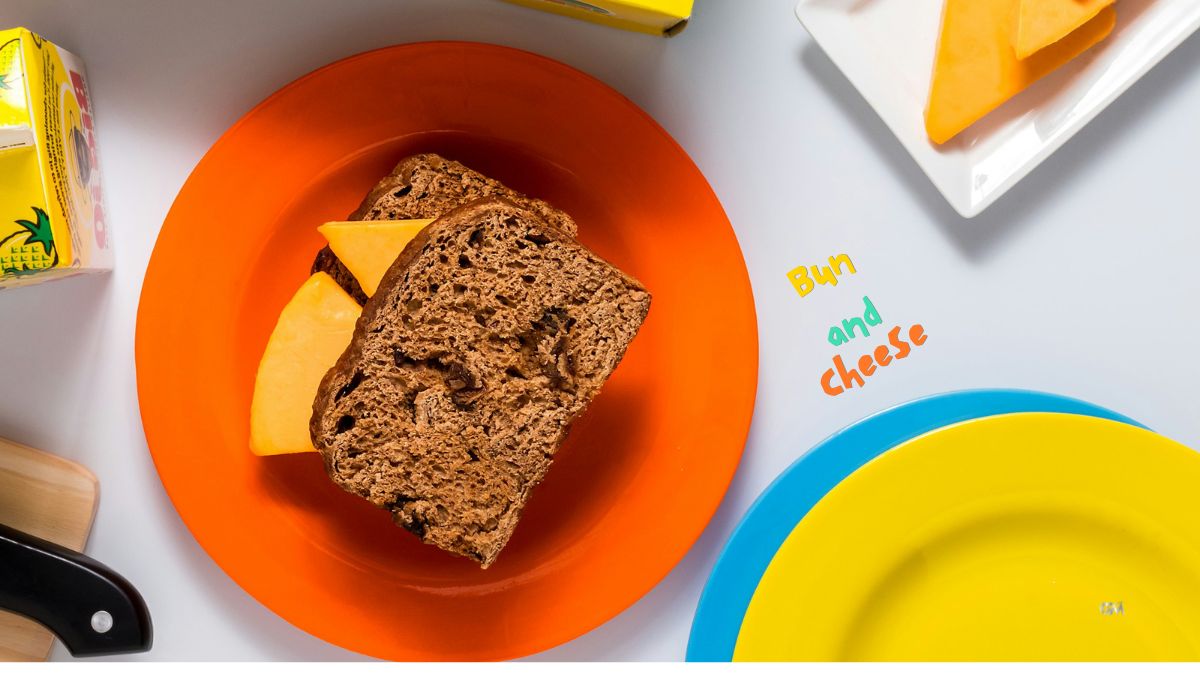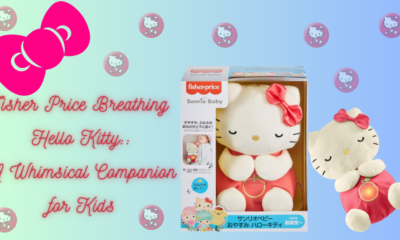Health & fitness
Mortadela: A Culinary Symphony

Introduction
Mortadela is a delicious Italian cured meat that has been a favorite for centuries. Its diverse varieties, rich history and culinary versatility have made it a staple of many cuisines. Discover the secrets of its popularity by diving into the world mortadela.
The Making of Mortadela
Mortadela’s is a work of art, which combines meticulously produced ingredients with carefully selected ingredients. Each element, from the best cuts of pork to the regional spices, contributes to its unique taste profile. Discover the nuances of the production process and the subtleties that give this cured meat its unique flavor.
Mortadela’s Types
The culinary world has seen an explosion in specialty mortadela varieties. The options for mortadela’s are as varied as the cultures who embrace them. We will explore both the classic and modern versions, revealing the global influences which have shaped the evolution of mortadela’s.
Popular Mortadela Recipes
Mortadela’s can be used in a variety of dishes. We’ll show you how to use mortadela in a variety of dishes, from mouthwatering tapas and innovative fusions to delicious mortadela’s.
Health Benefits of Moradela
Contrary to popular misconceptions, Mortadela’s is more than delicious. Learn about its nutritional value, its role as a source of protein, and how to make it a healthy part of your diet by using moderation and balancing.
Mortadela in Cultural Context
Mortadela has cultural significance beyond the kitchen. It is a culinary icon that takes the center stage at festivals and celebrations. Even art and media use it. We invite you to join us on an exploration of mortadela’s cultural impact.
Mortadela and Beyond
Mortadela’s is more than a culinary delight. It’s an active player in the world of ever-evolving gastronomy. Explore the latest trends in gastronomy and discover the endless versatility of mortadela.
Mortadela’s Buying Guide
The choices are endless when it comes to mortadela. Our comprehensive buying guide will help you make the best decisions and bring home only the highest quality.
How to Choose the Right Mortadela: Mortadela is available in a variety of forms, including traditional and artisanal blends. You should consider your personal preferences, whether you prefer the classic taste or a more adventurous one. You can tell if the ingredients are of good quality by looking for visible spices or a distinct texture.
Verifying Certification: A reputable certification is a sign of quality. Look for DOP (Denominazione d’Origine Protetta) when browsing the mortadela aisle. This ensures that the product adheres traditional production methods and local standards.
Avoiding Additive overload: Some mortadela’s may contain excessive additives. Choose products that contain minimal additives and preservatives to allow the true flavors of meat to come through. To make an informed decision, read the ingredients list.
Texture matters: A good mortadela will have a texture that is neither too soft or too firm. Press the mortadela’s gently to test for consistency, which indicates quality and the proper blend of ingredients.
Storage Tip: Mortadela’s must be stored properly to maintain their freshness. To prevent moisture loss, wrap the mortadela tightly in plastic or store it in a container that is airtight. For best flavor, keep it in the refrigerator and consume within a week.
Serving Suggestions
Charcuterie Boards at Mortadela’s Grand Stage Mortadela is the star of your charcuterie board. Combine it with a variety of cheeses and crackers. To complement the savory notes in mortadela’s, add a bit of sweetness by using fig jam or Honey. Arrange the pieces in an appealing pattern to invite your guests on a sensory experience.
Plate Pairings: A Culinary Ballet of Flavors Combine mortadela’s and a variety of other accompaniments to create a sophisticated plate. Add fresh fruit like melons and grapes for an explosion of sweetness. Add different textures by using crunchy nuts or pickled vegetables.
Creative Presentations: Mortadela as Edible Art Let your imagination run wild and think outside the box. Roll mortadela’s into rosettes, or layer them for edible bouquets. Try different shapes and arrange them to transform a plain plate into an art piece. Add fresh herbs to the plate for a final touch that will enhance both its visual appeal and gastronomic appeal.
Mortadela in Popular Culture
Mortadela is more than a culinary delight. It has evolved into a cultural phenomenon that has left its mark on various aspects of popular culture.
Mortadela: Famous Mentions
Mortadela’s is a popular mention in pop culture, including literature, films, and television. This cured meat is a staple in entertainment, from classic Italian films that showcase the joys of a Mortadela’s sandwich to modern TV shows that celebrate its versatility.
Mortadela goes viral Mortadela’s is a popular topic of banter on the internet in this age of memes. Social media sites are flooded with memes featuring the cured meat, causing a common appreciation of its texture and taste. Join us in celebrating the quirks of mortadela’s.
Mortadela: A Sustainable Choice
Conscious Consumption: Ethical Considerations Learn about the ethical aspects of mortadela’s. Consider the ethical side of mortadela’s as part of your culinary journey.
Ecological Practices: Nurturing Planet Learn how producers of mortadela’s are adopting eco friendly practices. Explore the efforts to make mortadela’s an environmentally conscious choice, from sustainable sourcing of materials to reducing carbon foot prints.
Local Sourcing – Connecting Communities By choosing locally produced mortadela’s, you not only support local producers but you also maintain a connection with traditional culinary practices. Learn about the benefits of choosing locally produced mortadela’s, and how this contributes to a vibrant and sustainable community.
Mortadela and Pairings
Perfect Wine Pairings: Elevating Experience Discover the secret to perfect wine pairings. We’ll help you create a harmonious symphony by combining the right wine with the mortadela.
Ideal Companions – Beyond the Basics Find the perfect companions to mortadela that go beyond the usual pairing. Explore a variety of options, from artisanal cheeses to freshly baked breads and unique condiments.
Conclusion
Mortadela, as a whole, is not just a dish; it is a culinary symphony. We have explored its variety, its history and its cultural impact. We invite you to join us as we embrace the richness and diversity of mortadela’s, and embark on an exciting gastronomic adventure that will delight your palate with each bite.
FAQs
Q: Does mortadela’s come only from Italy, or is it available in other cuisines as well?
Mortadela’s is an Italian dish that has become popular across the globe. Mortadela’s has been adopted by many cultures, with local twists.
Q: How do I distinguish between superior and inferior mortadela’s?
Mortadela’s should be made from quality ingredients with minimal additives and using traditional production methods. You can also check for certifications and reputable brands.
Q: Is there a vegetarian or vegan alternative to the traditional mortadela’s meat?
There are vegan and vegetarian versions of mortadela’s that use plant-based ingredients. These alternatives are meant to have a similar taste and texture without the use of meat.
Q: Can Mortadela’s be used as a sweet dish or dessert?
Mortadela’s has traditionally been used for savory dishes. However, chefs have incorporated it into desserts. Mortadela’s adds an unusual savory-sweet flavor to some sweet treats.
Q: How do you pair a mortadela with wine?
Balance is the key to perfect pairings. Mortadela’s that are lighter in color pair well with crisp white wines while heavier varieties go better with robust reds. Try different combinations to find one that you like.
Health & fitness
Exploring the Connection Between Alcohol Addiction and Anxiety Disorders

Introduction
Alcohol addiction and anxiety disorders are two prevalent and interconnected mental health issues that often coexist, creating a complex cycle that can be difficult to break. Individuals struggling with anxiety may turn to alcohol as a way to self-medicate and alleviate their symptoms, while excessive alcohol use can, in turn, exacerbate anxiety, leading to a vicious cycle of dependence and worsening mental health. Understanding the connection between alcohol addiction and anxiety disorders is crucial for developing effective treatment strategies that address both conditions simultaneously. This article explores the relationship between alcohol addiction and anxiety disorders, the impact of this dual diagnosis, and approaches to treatment.
The Relationship Between Alcohol Addiction and Anxiety Disorders
Self-Medication and Anxiety Relief
One of the primary reasons individuals with anxiety disorders may develop alcohol addiction is the self-medication hypothesis. Anxiety disorders, such as generalized anxiety disorder (GAD), social anxiety disorder, and panic disorder, can cause significant distress, leading individuals to seek relief through alcohol. According to the Anxiety and Depression Association of America (ADAA), alcohol’s depressant effects on the central nervous system can temporarily reduce feelings of anxiety and promote relaxation, making it an appealing coping mechanism for those struggling with anxiety.
The Cycle of Dependence
While alcohol may initially provide temporary relief from anxiety, its long-term use can lead to dependence and addiction. As tolerance to alcohol develops, individuals may need to consume more to achieve the same calming effects, increasing their risk of developing alcohol use disorder (AUD). The National Institute on Alcohol Abuse and Alcoholism (NIAAA) highlights that this cycle of increasing alcohol consumption can worsen anxiety symptoms over time, leading to a situation where both conditions feed into each other, making it difficult to manage either effectively.
Alcohol’s Impact on Anxiety
Alcohol’s impact on anxiety is multifaceted. While it may offer short-term relief, alcohol can disrupt brain chemistry, leading to heightened anxiety, particularly during withdrawal periods. Alcohol affects neurotransmitters such as serotonin and gamma-aminobutyric acid (GABA), which play key roles in regulating mood and anxiety. Chronic alcohol use can lead to imbalances in these neurotransmitters, increasing the risk of anxiety disorders. Furthermore, the withdrawal symptoms associated with alcohol dependence, including tremors, agitation, and panic attacks, can significantly exacerbate anxiety, creating a challenging environment for recovery.
The Prevalence of Co-Occurring Alcohol Addiction and Anxiety Disorders
Statistical Overview
Co-occurring alcohol addiction and anxiety disorders are more common than many realize. Studies have shown that individuals with anxiety disorders are twice as likely to develop alcohol use disorder compared to those without anxiety. The National Epidemiologic Survey on Alcohol and Related Conditions (NESARC) reports that approximately 20% of people with an anxiety disorder also have alcohol addiction. This dual diagnosis presents unique challenges for treatment, as both conditions need to be addressed to achieve lasting recovery.
Impact on Quality of Life
The co-occurrence of alcohol addiction and anxiety disorders can have a profound impact on an individual’s quality of life. The presence of both conditions can lead to greater impairment in daily functioning, increased risk of physical health problems, and a higher likelihood of experiencing social and occupational difficulties. Individuals with this dual diagnosis may also be at a higher risk of suicide, further underscoring the importance of comprehensive treatment.
Approaches to Treatment
Integrated Treatment Programs
Effective treatment for co-occurring alcohol addiction and anxiety disorders requires an integrated approach that addresses both conditions simultaneously. Integrated treatment programs combine addiction treatment with mental health care, ensuring that neither condition is overlooked. According to the Substance Abuse and Mental Health Services Administration (SAMHSA), integrated treatment is associated with better outcomes, including reduced substance use, improved mental health, and enhanced overall well-being.
Cognitive-Behavioral Therapy (CBT)
Cognitive-behavioral therapy (CBT) is one of the most widely used therapeutic approaches for treating both alcohol addiction and anxiety disorders. CBT focuses on identifying and changing negative thought patterns and behaviors that contribute to both conditions. By learning healthier coping mechanisms and strategies for managing anxiety, individuals can reduce their reliance on alcohol as a way to cope. CBT has been shown to be particularly effective in reducing the symptoms of anxiety and preventing relapse in individuals with co-occurring disorders.
Medication-Assisted Treatment (MAT)
Medication-assisted treatment (MAT) can be a valuable component of managing both alcohol addiction and anxiety disorders. For alcohol addiction, medications such as naltrexone, acamprosate, and disulfiram can help reduce cravings and prevent relapse. For anxiety disorders, antidepressants or anti-anxiety medications may be prescribed to help regulate mood and reduce symptoms. It’s important for individuals with a dual diagnosis to work closely with healthcare providers to ensure that medications are used safely and effectively.
Peer Support and Counseling
Peer support and counseling play a crucial role in the recovery process for individuals with co-occurring alcohol addiction and anxiety disorders. Support groups, such as Alcoholics Anonymous (AA) or groups specifically for those with dual diagnoses, provide a sense of community and shared understanding. Counseling, whether individual or group, offers a safe space to explore the underlying causes of addiction and anxiety and develop personalized strategies for recovery.
Lifestyle Changes and Self-Care
In addition to formal treatment, lifestyle changes and self-care practices are essential for managing both alcohol addiction and anxiety disorders. Regular physical activity, a balanced diet, adequate sleep, and stress management techniques such as mindfulness meditation can help reduce anxiety and support overall well-being. Creating a structured routine and avoiding triggers that may lead to alcohol use can also help individuals maintain their recovery.
Conclusion
The connection between alcohol addiction and anxiety disorders is complex and often cyclical, with each condition exacerbating the other. Understanding this relationship is crucial for developing effective treatment strategies that address both conditions simultaneously. Through integrated treatment programs, cognitive-behavioral therapy, medication-assisted treatment, peer support, and lifestyle changes, individuals with co-occurring alcohol addiction and anxiety disorders can achieve lasting recovery and improve their quality of life. Recognizing the importance of addressing both alcohol addiction and anxiety is the first step toward healing and building a healthier future.
References
- Anxiety and Depression Association of America. (2021). Alcohol and Anxiety: Understanding the Connection. Retrieved from [ADAA](https://adaa.org/)
- National Institute on Alcohol Abuse and Alcoholism. (2020). Alcohol Use Disorder: A Comparison Between DSM–IV and DSM–5. Retrieved from [NIAAA](https://www.niaaa.nih.gov/)
- National Epidemiologic Survey on Alcohol and Related Conditions. (2018). Prevalence of Co-Occurring Alcohol Use Disorder and Anxiety Disorders. Retrieved from [NESARC](https://www.nesarc.org/)
- Substance Abuse and Mental Health Services Administration. (2021). Integrated Treatment for Co-Occurring Disorders. Retrieved from [SAMHSA](https://www.samhsa.gov/)
- American Psychological Association. (2019). Cognitive-Behavioral Therapy for Anxiety and Substance Use Disorders. Retrieved from [APA](https://www.apa.org/)
Health & fitness
FDA Recalled Noodles: What You Need to Know

FDA Recalled Noodles: With regards to sanitation in the US, the Food and Medication Organization (FDA) assumes a urgent part in guaranteeing that the items on our supermarket racks are protected to eat. However, regardless of thorough guidelines, food reviews actually happen, and one of the later zeros in has been on noodle items. Whether you love ramen, pasta, or some other kind of noodles, it’s urgent to know about why these reviews occur and what steps you ought to take in the event that you wind up with a reviewed item in your storeroom.
What Triggers a Food Recall?
FDA Recalled Noodles: Food reviews can be set off by different elements, all of which represent a possible gamble to purchaser wellbeing. Normal reasons incorporate pollution with destructive microorganisms like Salmonella or E. coli, the presence of undeclared allergens, or even unfamiliar articles tracked down in the food. On account of noodles, explicit triggers could incorporate tainting during the assembling system, inappropriate naming, or the disclosure of hurtful synthetics like pesticides or weighty metals. Paraguay national football team vs Brazil national football team lineups
The FDA’s Role in Food Recalls
FDA Recalled Noodles: The FDA is liable for checking and guaranteeing the wellbeing of food items in the US. At the point when a potential issue is distinguished, the FDA works with the producer to give a review if fundamental. This can happen willfully, where the organization chooses to review an item, or automatically, where the FDA commands the review because of security concerns. The interaction ordinarily includes distinguishing the impacted item, informing people in general, and guaranteeing that the reviewed item is eliminated from store racks and, if vital, from buyers’ homes.
Recent FDA Noodle Recalls
FDA Recalled Noodles: Lately, a few noodle items have been reviewed because of different security concerns. For example, there have been situations where noodles were found to contain undeclared allergens like peanuts or soy, representing a serious gamble to people with sensitivities. In different occurrences, bacterial defilement has been the guilty party, prompting reviews to forestall foodborne diseases. Significant brands, as well as more modest producers, have been impacted, featuring that no organization is resistant to the potential for a review.
Reasons Behind Noodle Recalls
Noodle reviews can be credited to a few explicit variables:
Pollution Issues: Microorganisms, for example, Listeria or Salmonella can taint noodles during creation, making them risky to eat. Synthetic defilement from substances like pesticides is another worry.
Mislabeling and Allergen Dangers: Inaccurate naming, particularly in regards to allergens, can be hazardous for buyers with food sensitivities. On the off chance that a noodle item contains an undeclared allergen, forestalling potential hypersensitive reactions should be reviewed.
Quality Control Disappointments: Issues in the assembling system, like deficient cleaning or cross-pollution, can prompt the development of hazardous food. These disappointments frequently bring about reviews when they are found.
Health Risks Associated with Recalled Noodles
The wellbeing gambles related with reviewed noodles rely upon the justification behind the review. For instance:
Bacterial Tainting: Eating noodles sullied with hurtful microbes can prompt serious foodborne diseases. Side effects could incorporate queasiness, heaving, loose bowels, and fever.
Hypersensitive Responses: For people with food sensitivities, devouring an item that contains an undeclared allergen can set off extreme responses, including hypersensitivity, which can life-compromise.
Synthetic Tainting: Openness to hurtful synthetic compounds through food can prompt long haul medical problems, including neurological harm and malignant growth.
How to Check If Your Noodles Are Recalled
In the event that you’re worried that the noodles in your kitchen may be important for a review, there are a few stages you can take:
Really look at the FDA Site: The FDA routinely refreshes its review list, which can be gotten to on the web. You can look for explicit items or peruse the rundown for ongoing reviews.
Search for Notices: Numerous retailers will post review sees in stores or on the web. Assuming you’ve bought noodles as of late, actually look at your store’s site for any cautions.
Utilize the Brand’s Contact Data: Assuming you feel somewhat doubtful, contact the maker straightforwardly. They can give data on whether your item is impacted by a review.
What to Do If You Have Recalled Noodles
Assuming you find that your noodles have been reviewed, making a quick move is significant:
Try not to Consume the Item: Regardless of whether you’ve previously eaten a portion of the noodles without issue, it’s smarter to be protected and try not to consume the rest.
Discard the Item Securely: Observe the FDA’s rules for discarding reviewed food to forestall any gamble to other people.
Demand a Discount or Substitution: Numerous makers and retailers offer discounts or trades for reviewed items. Check the review notice for directions on the best way to continue.
Preventing Future Noodle Recalls
While purchasers have little command over the assembling system, there are steps that makers can take to diminish the gamble of future reviews:
Severe Quality Control: Carrying out thorough testing and quality control measures can assist with getting possible issues before items arrive at shoppers.
Legitimate Marking: Guaranteeing that all fixings, particularly allergens, are obviously named is critical for shopper wellbeing.
Standard Reviews: Normal examinations of assembling offices can help distinguish and address potential pollution gambles.
The Impact of Recalls on Brands and Manufacturers
A food review can have huge ramifications for the brand in question. In addition to the fact that it result in can monetary misfortunes because of the expense of the review and lost deals, however it can likewise harm the brand’s standing. Buyers might lose trust in an organization that has a past filled with drove, to a drawn out influence on deals. Moreover, lawful activity from impacted shoppers can additionally strain an organization’s assets.
How Consumers Can Protect Themselves
To shield yourself from the dangers related with reviewed noodles, think about the accompanying tips:
Remain Informed: Consistently check the FDA’s review rundown or pursue review warnings.
Be Careful of New Items: While attempting another brand of noodles, research the organization’s set of experiences with respect to reviews and sanitation.
Store Food Appropriately: Legitimate capacity can assist with forestalling pollution after buy. Keep noodles in a cool, dry spot and adhere to a particular stockpiling directions on the bundling.
Government and Industry Collaboration
The FDA works intimately with food makers to guarantee that items are ok for buyers. This cooperation incorporates standard examinations, sharing of best practices, and quick correspondence in case of a potential security issue. The food business likewise assumes a part in propelling sanitation through development and adherence to stricter wellbeing principles.
Lessons Learned from Noodle Recalls
Each review offers a valuable chance to further develop sanitation rehearses. For makers, this could mean returning to their creation cycles or putting resources into better quality control measures. For purchasers, it fills in as a suggestion to remain educated and mindful about the items we consume.
Conclusion
Noodle reviews, while concerning, are an essential piece of keeping up with food handling principles. By remaining educated and making the suitable strides when a review happens, purchasers can shield themselves and their families from potential wellbeing chances. In the mean time, producers should keep on focusing on quality control and appropriate marking to forestall future reviews. Eventually, food handling is a common obligation between the FDA, makers, and purchasers.
FAQs
Q: How frequently do noodle reviews occur?
Noodle reviews are generally inconsistent, however they do happen, particularly when tainting or naming issues emerge.
Q: How would it be advisable for me to respond assuming I’ve proactively eaten reviewed noodles?
On the off chance that you experience any unfriendly side effects, contact a medical services supplier right away. It’s likewise really smart to report your experience to the FDA.
Q: Might I at any point return reviewed noodles to the store?
Numerous retailers will acknowledge returns of reviewed items and may offer a discount or substitution.
Q: How might I try not to purchase reviewed noodles later on?
Remain informed about current reviews and consider purchasing from brands major areas of strength for with records.
Q: How does the FDA forestall noodle reviews?
The FDA works with producers to uphold food handling guidelines and behaviors customary examinations to guarantee consistence.
Health & fitness
Bun and Cheese: A Jamaican Culinary Tradition

At the point when you consider Jamaican food, energetic flavors and rich social legacy ring a bell. Among the numerous famous dishes from this island country, bun and cheese stands apart as a darling treat that is saturated with custom. In any case, what precisely is bun and cheese, and for what reason is it so extraordinary? How about we jump into this tasty mix of sweet and flavorful, and investigate its set of experiences, fixings, and social importance.
What is Bun and Cheese?
Bun and cheese is a basic yet delightful mix of two fundamental parts: a sweet, flavored bread known as “bun” and a cut of tart, cheese-like cheese. This matching is particularly famous in Jamaica and the Caribbean, where it is much of the time delighted in during Easter but on the other hand is an all year #1. The bun is normally made with dried natural products, flavors, and molasses, giving it a rich, dim variety and a sweet taste that impeccably supplements the sharpness of the cheddar. mosquito control
History of Bun and Cheese
Origins of Jamaican Bun: The starting points of the Jamaican bun can be followed back to the English colonization of Jamaica. The customary English hot cross bun, a flavored sweet bun set apart with a cross on top, was presented by English pilgrims. Over the long run, Jamaicans adjusted the recipe to suit nearby preferences, consolidating fixings like molasses and flavors that were promptly accessible on the island. This brought forth the Jamaican bun, which, in contrast to its English ancestor, is normally portion formed and appreciated during Easter as well as over time.
The Advancement of Jamaican cheese: cheese wasn’t generally a staple in the Jamaican eating regimen, yet over the long haul, it turned into an essential piece of this notable dish. The ccheese generally usually matched with Jamaican bun is a radiant orange, handled cheese that is known for its sharp and tart flavor. While this kind of cheddar may not be local to Jamaica, it has turned into the go-to decision for bun and cheeser darlings across the island. The mix of the sweet, flavored bun with the pungent, tart cheddar makes a one of a kind flavor profile that has turned into a staple in Jamaican families.
Ingredients of Bun and Cheese
Key Ingredients in Jamaican Bun: The Jamaican bun is wealthy in flavor and custom, made with a couple of key fixings that make it really exceptional:
Flour: The foundation of the bun, giving design.
Sugar: Commonly earthy colored sugar or molasses is utilized to improve the bun and give it its unmistakable dull variety.
Flavors: A mix of cinnamon, nutmeg, and allspice gives the bun its warm, fragrant flavor.
Dried Natural products: Raisins and some of the time currants are added for surface and eruptions of pleasantness.
Margarine and Milk: These add extravagance and dampness to the bun, making it delicate and tasty.
The Unique Jamaican cheese: The cheddar utilized in bun and cheddar is normally a handled cheddar, known for its radiant orange tone and tart taste. It is firm, yet velvety, and cuts effectively, making it ideal for layering between cuts of bun. The cheddar’s sharpness slices through the pleasantness of the bun, making a reasonable and fulfilling treat.
How to Make Jamaican Bun and Cheese
Step-by-Step Guide to Making Jamaican Bun: Making Jamaican bun at home is a remunerating experience, and the interaction is somewhat clear. This is the way you can make it happen:
Blend Dry Fixings: Consolidate flour, sugar, flavors, and dried organic products in an enormous blending bowl.
Get ready Wet Fixings: In a different bowl, liquefy margarine and blend in with milk and molasses.
Consolidate: Gradually blend the wet fixings into the dry fixings until a mixture structures.
Heat: Move the batter into a portion dish and prepare at 350°F (175°C) for around 45 minutes or until a toothpick embedded into the middle tells the truth.
Cool and Cut: Let the bun cool totally prior to cutting it.
Instructions to Set up thecheese for Bun and cheese
The cheddar groundwork for bun and cheddar is basic. All you want to do is:
Cut the Cheddar: Cut the cheddar into thick cuts that will hold up well against the bun.
Layer the Bun and Cheddar: Spot a cut of cheddar between two cuts of bun. You can serve it with no guarantees or delicately toast it for a warm, melty rendition.
Cultural Importance of Bun and Cheese
Bun and Cheese During Easter: In Jamaica, bun and cheese is something beyond a bite — it’s an image of Easter. Like how hot cross buns are delighted in Britain during this time, bun and cheddar is a priority on Great Friday. Families assemble to share this treat, frequently with the cheddar being a gift from friends and family. The custom of eating bun and cheddar during Easter has been gone down through ages, making it a treasured piece of Jamaican culture.
Bun and Cheddar in Jamaican Celebrations: Past Easter, bun and cheddar is likewise a famous treat at different Jamaican celebrations and festivities. Whether it’s a birthday, a family gathering, or a public occasion, bun and cheddar is many times on the menu. Its versatility and simplicity of readiness make it a helpful and scrumptious choice for taking care of enormous gatherings.
Nutritional Information
Health Benefits of Bun and Cheese
While bun and cheddar is a treat, it has a few nourishing advantages:
Jolt of energy: The sugars from the bun give a fast wellspring of energy.
Protein: The cheddar adds protein, which is fundamental for muscle fix and development.
Calcium: Cheddar is a decent wellspring of calcium, which is significant for bone wellbeing.
Possible Dietary Worries: Be that as it may, similar to any treat, bun and cheddar ought to be appreciated with some restraint. The bun is high in sugar, and the cheddar is much of the time high in fat and salt, which may not be reasonable for everybody, especially those with dietary limitations, for example, diabetes or hypertension. For a better rendition, you can choose entire grain flour and decreased fat cheddar.
Bun and Cheese Around the World
Bun and Cheese in Caribbean Diaspora: The affection for bun and cheddar isn’t restricted to Jamaica alone. Caribbean people group all over the planet, especially in the US, Canada, and the Unified Realm, have conveyed this custom with them. Caribbean pastry kitchens and shops in these districts frequently sell Jamaican bun and cheddar, particularly around Easter, permitting those a long way from home to partake in a sample of their legacy.
Present day Turns on Customary Bun and Cheddar: Lately, culinary specialists and home cooks the same have explored different avenues regarding new varieties of bun and cheddar. Some have added fixings like chocolate chips or nuts to the bun, while others have explored different avenues regarding various sorts of cheddar, like brie or gouda, for a connoisseur contort on this exemplary dish.
Conclusion
Bun and cheddar is something other than a delicious treat; it’s an impression of Jamaican culture, history, and personality. From its starting points in English culinary customs to its development into a cherished Jamaican staple, bun and cheddar has turned into an essential piece of the island’s culinary scene. Whether delighted in during Easter or as an all year tidbit, bun and cheddar keeps on uniting individuals, both in Jamaica and in Caribbean people group all over the planet.
FAQs
Q: What is the best cheddar to use for bun and cheddar?
The most famous decision is a handled cheddar, known for its tart flavor and dazzling orange tone.
Q: Could I at any point make a better rendition of Jamaican bun?
Indeed, you can make a better rendition by utilizing entire grain flour rather than white flour, diminishing how much sugar, and choosing dried organic products without added sugars. You can likewise take a stab at utilizing diminished fat cheddar to bring down the fat substance.
Q: Is bun and cheddar just eaten during Easter?
While bun and cheddar is particularly well known during Easter in Jamaica, it is delighted in all year as a bite or even a quick bite.
Q: What makes Jamaican cheddar not the same as different cheeses?
Jamaican cheddar, frequently a sort of handled cheddar, is known for its particular dazzling orange tone and tart flavor. It is generally firmer and less smooth than a few different cheeses, making it ideal for matching with sweet Jamaican bun.
Q: Might I at any point substitute the conventional Jamaican cheddar with one more kind of cheddar?
Indeed, you can try different things with various sorts of cheddar, like gouda or brie, for a novel contort on the customary dish. Be that as it may, the exemplary Jamaican experience comes from utilizing the customary handled cheddar.
-

 Entertainment7 months ago
Entertainment7 months ago欧乐影院: Elevating Your Streaming Experience
-

 Art10 months ago
Art10 months agoHunting SVG: A Digital Frontier in Design
-

 Uncategorized7 months ago
Uncategorized7 months ago翻譯社 推薦 中翻韓
-

 Entertainment2 months ago
Entertainment2 months agoOllyhibs: A TikTok Star’s Influence on the Sports Industry
-

 Art10 months ago
Art10 months agoFisher Price Breathing Hello Kitty: A Whimsical Companion for Kids
-

 Health & fitness10 months ago
Health & fitness10 months agoAlevemente: The Shocking Truth About it
-

 Technology10 months ago
Technology10 months agoAM2023x: Unlocking the Future
-

 Education10 months ago
Education10 months ago“Oru Rizzardi Peteando con Su Amiga Guadaaragonn” all about this phrase
